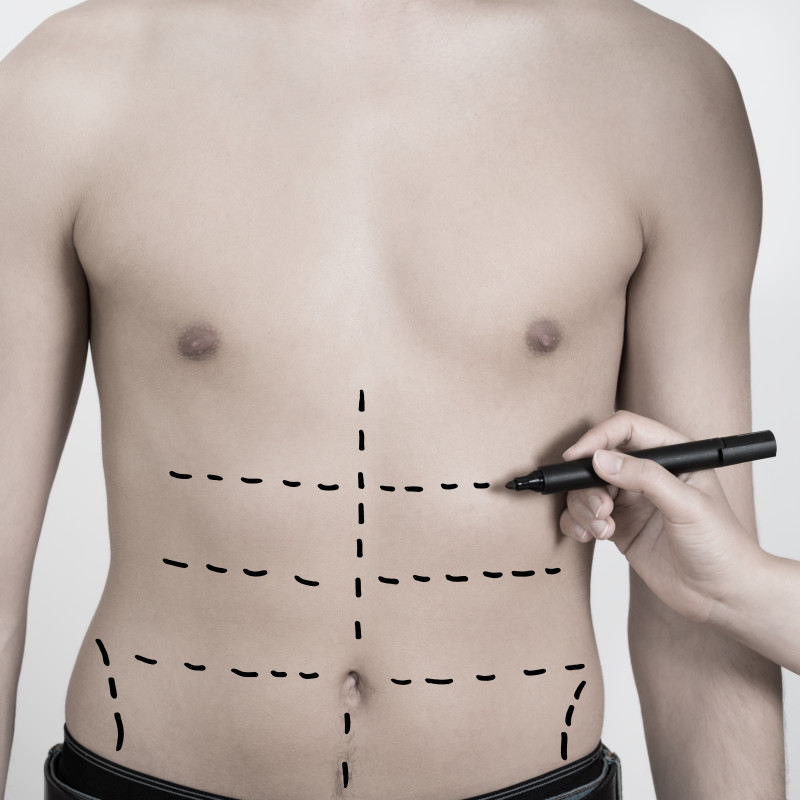 Liposuction helps to remove fatty pockets from trouble spots that are not responding favorably to diet, exercise, and a healthy lifestyle. Remember, liposuction is a supplemental treatment intended to augment diet and exercise, not a replacement for trying to stay in sound physical shape, and will not eliminate cellulite.
Liposuction helps to remove fatty pockets from trouble spots that are not responding favorably to diet, exercise, and a healthy lifestyle. Remember, liposuction is a supplemental treatment intended to augment diet and exercise, not a replacement for trying to stay in sound physical shape, and will not eliminate cellulite.
|
Liposuction
Procedure Information
|
|
How Does Liposuction Work?
There are different types of liposuction, but they all utilize the same tool called a cannula, a rod attached to a suction device used to suction out excess fat. Small incisions are made into which the cannula is inserted. It is then moved back and forth between the skin and muscle in the areas of difficult fatty deposits so that the suction device can remove the excess fat.
Since liposuction became a common cosmetic procedure for fat removal and body contouring, there have been improvements made to the process that help reduce blood loss, pain, and recovery time.
Tumescent liposuction uses a smaller cannula. First, the surgeon injects a saline-based liquid that contains epinephrine (a medication used to help restrict blood vessels and inhibit bleeding) and a pain killer into the incisions. The fat will be firmer and easier to remove.
Ultrasonic-assisted liposuction is a procedure in which targets and liquefies fat cells using ultrasonic waves. These fat cells are then removed using the cannula. The benefits of this procedure include a more precise removal of fat, an increase of skin contraction, and a better preservation of surrounding nerves.

Who is a Good Candidate for Liposuction?
Liposuction has been proven safe and effective, but that doesn’t mean it’s the right choice for everyone. You are a good candidate for liposuction if:
- You are in good health and have a strong immune system.
- You have firm skin that retains normal levels of elasticity.
- You do not have excessive cellulite (this could lead to irregularities and uneven skin once fat cells are removed).
- You have already tried to lose the weight or target fatty deposits with exercise and a healthy diet.
What are the Risks of Liposuction?
As aforementioned, liposuction has a strong record of safety, and today, the procedure is safer than ever when performed by an experienced, board-certified plastic surgeon like Dr. Chariker. While very rare, there have been reports of skin discoloration. The chances for medical complications increase if too much fat is removed or the procedure is scheduled for too long a period of time (since the patient is sedated). A good surgeon will know this and plan the procedure accordingly.
How to Heal after Liposuction
With smaller incisions and advances to make the operation less aggressive, healing time has significantly reduced. Most people can resume light activity after a few days. You will feel tender, and while rare, visible bruising sometimes develops.One of the most common complaints during the recovery process stems from swelling. Minimize the risks of swelling by using ice packs, wearing compression garments and staying hydrated. Some surgeons will recommend light massaging after the initial period of healing. Remember, fat cells are permanently removed during liposuction, but that doesn’t inhibit you from regaining the weight. You will need to maintain a healthy diet and lifestyle to sustain results, and if weight gain does occur, it is possible that unevenness and rippling can result.